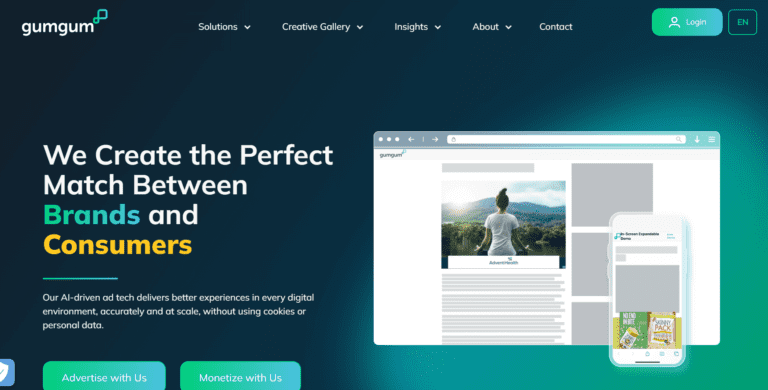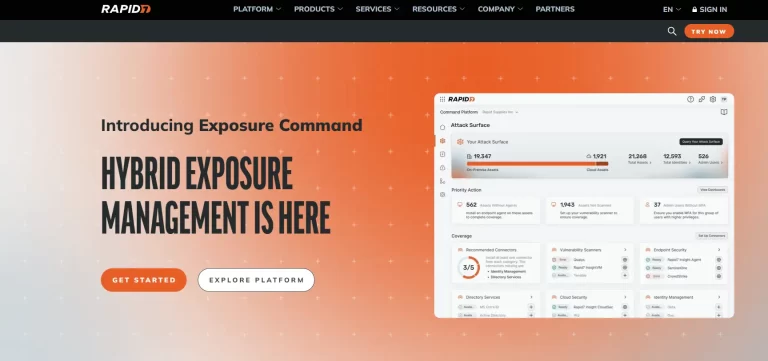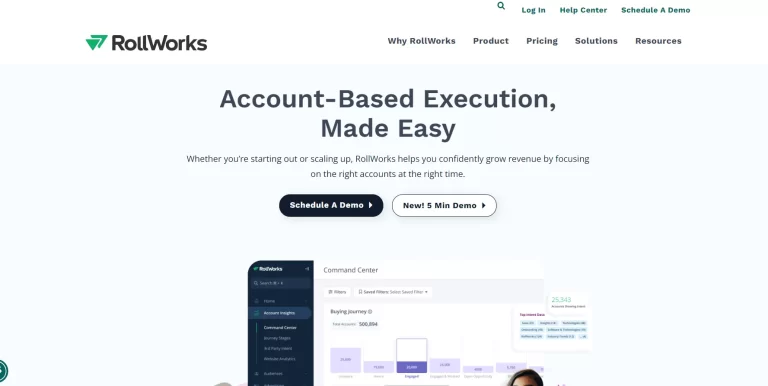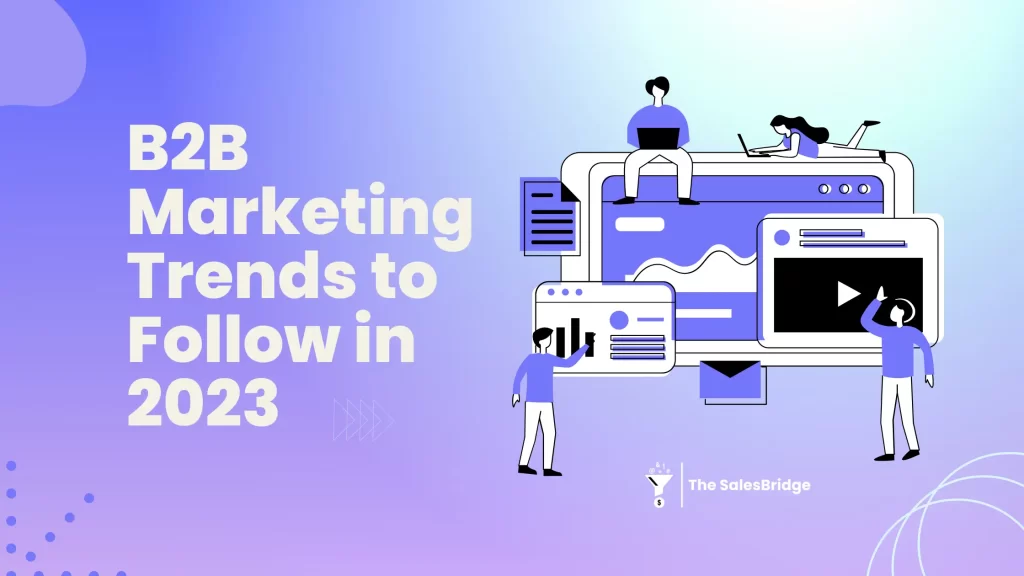Introduction
Engaging with your target audience will involve you getting into the nitty-gritty details to create a tailored-fit message addressing their specific pain points. As a B2B marketer looking for new ways and tactics to achieve that, Account Based Marketing (ABM) will be your go-to solution. ABM has proven effective amongst other marketing strategies out there.
That’s because at the core of account-based marketing lies the key to unlocking its full potential — Personalization. Decision-makers In the B2B space are, more than ever, influenced by experiences that speak directly to them.
According to a survey, 87% of B2B marketers believe that ABM delivers a higher ROI than other forms of B2B marketing, like inbound marketing. By embracing personalization in ABM, businesses can cut through the crowded market and connect with their targeted audience. Nurture them down the sales funnel to take action. Either to book a meeting or purchase a product.
In this article, we’ll walk you through all that it is to know about ABM, how to Implement it, and how to personalize your ABM campaigns effectively.
What is Account-Based Marketing (ABM)?
Account-Based Marketing (ABM) is a strategic approach involving the sales and marketing teams to focus on high-value accounts in a market or business, to create personalized buying experiences for better customer acquisition, relationship-building, and business growth. ABM zeroes in tailoring content, messages, and campaigns to individual needs and pain points of target accounts. Unlike its counterpart, traditional marketing opens its doors to a wider audience.
To get the most out of ABM’s strategy, marketing and sales teams should shift their mindsets from “Who’s interested in my products?” to, “Whom should we sell to?”. With platforms, technology, and solutions like Salesbridge, coordinating, marketing and sales initiatives become seamless.
Why Account-Based Marketing Should Be Your Priority?
An account-based marketing approach prioritizes quality over quantity. For instance, you sell a SaaS product or render a consulting service.
Rather than driving awareness and engaging several potential leads—small businesses, SMBs, and enterprises. You will want to focus on accounts with the highest need and the required budget for your product or services. This strategy cuts through the noise and speaks directly to the decision-makers within those businesses.
According to Alterra Group, 97% of marketers achieved a higher ROI by incorporating ABM than with any other marketing initiative. The result? A more efficient use of resources, higher engagement rates, and a significant boost in sales. The goal is not to eliminate lead generation initiatives but to balance qualified leads and account-based strategies for optimal results. By combining efforts and resources, marketing and sales teams can efficiently engage and convert accounts.
What Are The Benefits of Data-Driven Account-Based Marketing?
Data is everything in the B2B marketing space. Leveraging on data is one sure way to make informed decisions, and gain deeper insights into their target accounts, enabling precise targeting and most importantly, personalization.
Align Your Sales and Marketing Teams: The ABM approach is to close a deal with a select group of high-value accounts. By the efforts of both the marketing and sales teams working together, towards achieving that goal. The marketing team is focused on messaging and reaching out, to engage potential leads.
Once qualified, the sales team jumps in to nurture these leads towards closing the deal. Ensuring time, money and resources are used efficiently.
Improved targeting and personalization: Customers are suspicious about the generic marketing messages they receive. Hence, leading to no action—a waste of effort and resources. With insights from data-driven ABM, you can view your target audience, and identify potential triggers and pain points.
Gain a laser-sharp understanding of your target audience to predict their behaviour. Create content addressing their pain points and engage them in their customer journey towards conversion.
Enhanced customer experiences: A happy customer equals a prosperous business. Insights into prospective customers will prevent you from bombarding them with irrelevant marketing messages.
Keep in mind that data-driven ABM isn’t just about closing deals. Long-term partnerships are built. This approach demonstrates that it can lead to greater trust and loyalty. Which in turn enhances customer experience.
- Increased conversion rates and revenue: Since ABM targets high-value accounts that are more likely to convert, companies can allocate their resources more efficiently.
Using available data, personalized and targeted campaigns can effectively engage the prospective audience and guide them through the sales funnel. Increasing revenue for your business.
How Can You Implement a Data-Driven ABM Technique for Your Business?
Implementing a data-driven ABM strategy requires a systematic approach.
Here’s what you need to do.
Identify Target Accounts:
After understanding your target account, priortize engaging with accounts that match your ideal customer profile (ICP). A company with all the qualities that would make them the best fit for the solutions you provide. Categorize these companies based on size, industry, needs and pain points and identify target accounts with a high potential to generate more revenue for your brand.
When Identifying companies here are things you need to check out:
- Identify large companies that can help increase average order value and generate substantial revenue.
- Find companies needing your specific solution to increase the likelihood of purchase.
- Target accounts with a short decision-making process based on company size and structure to close deals faster.
- Engage companies using competitor products by highlighting standout features.
These tips help create a list of potential target accounts for account-based marketing strategies. With a customer relationship management (CRM) tool such as LeadFeeder, you can easily research companies that are a good fit for your products and ideal for your business needs.
Account Research:
Each account differs from the other. To run campaigns customized to their needs, gather detailed information about each account —industry, pain points, decision-makers, and company size.
With this information, you can better create personalized messages, and content, referring solutions to them. And with a tool like DataFox, you can search for businesses similar to your existing customer profiles.
Create Customized Content and Engage:
Personalized content in marketing campaigns can’t be over-emphasized. It is the foundation behind its success. To capture the interest of your target accounts, you need to communicate directly with them. And, focusing on educational content that addresses pain points and offers solutions establishes your brand as an authority in your field. To capture the interest of your target accounts, you need to communicate directly with them. And, focusing on educational content that addresses pain points and offers solutions establishes your brand as an authority in your field.
Here are some “winning” content formats:
- In-Depth Whitepapers: detailed documents that provide comprehensive analysis and solutions to industry-specific challenges.
- Ebooks: extensive guides that cover broader topics and serve as valuable resources for your audience.
- Blog posts: regular articles that offer insights, tips, and updates on industry trends, helping to keep your audience engaged and informed.
- Case studies: real-world examples of how your solutions have successfully addressed clients’ problems, showcasing your expertise and results.
- Infographics: visually engaging summaries of key information or statistics that make complex data easy to digest.
- How-to guides: step-by-step instructions or best practices on solving common problems or improving processes within your industry.
- Videos: short, informative clips that explain concepts, demonstrate solutions or share industry insights in an engaging format.
Ensure each message is personalized and aligns with your strategy. Distribute across multiple marketing channels such as email and social media.
Share customer success stories, highlight real-world use cases, or create narratives that showcase how your solutions have positively impacted businesses like theirs. Thus, engaging them every step of their buyer journey.
Measure and Optimize:
Keeping track of the most impactful marketing metrics and key performance indicators (KPIs) for ABM campaigns is vital. These include Ad views, time spent on site, average order value and more. Measuring the performance of your marketing campaigns using these metrics and KPIs helps you identify high-revenue accounts, and areas for improvement and adjust your strategy accordingly.
How to Personalize Your ABM Campaigns
Here’s how to effectively personalize your ABM campaigns.
Segment Your Audience:
In the B2B space, segmenting your audience involves grouping your target accounts based on their firmographics. That is based on: Industry, location, company size, revenue, number of employees and more. Since personalization is at the core of ABM, you can use the information to segment effectively.
As such, you develop targeted messages for each segment. So you can test, compare and make improvements where necessary.
Create Personalized Content:
Creating personalized content drives your message home to win the hearts of your target accounts. A message or email that arrives with a subject line so captivating, that they have no choice but to read and engage with it. Prompting them to take essential steps towards conversion.
Above all, storytelling makes your content stand out. Incorporate storytelling elements into your messaging to communicate the value you’re offering.
Use Team Effort:
A strategy such as account-based marketing requires a team effort. Your marketing and sales team members must collaborate and be in the loop from the beginning of the ABM campaign.
To get them on the same page:
- Train your team on managing leads for ABM and how to communicate with high-value customers.
- Emphasize the importance of building communication into everyone’s workflow. Enhancing collaboration and sharing insights about top accounts.
- Use CRM to create a shared list of accounts that all teams can easily access. This will ensure people save time searching for the information they need to identify, target and engage the best accounts
Successful Examples of ABM Efforts
GumGum

GumGum, a US-based media company came up with a creative idea to capture the attention of fast-food giant, McDonald’s. They turned to using the ABM strategy to approach their ideas.
Here’s what they did.
The company designed 100 burger kits and sent them to the executives at both McDonald’s and its media agencies. The box also contained a fast-food receipt with each executive name on it—Personalization.
In addition, GumGum used many of McDonald’s BigMac ingredients to explain the different features of their technology. Then they shared the pitch on social media, tagging key decision-maker’s accounts.
The result ?
Bagging a meeting with the key stakeholders at McDonald’s

This perfect example grabbed the people’s attention. It was unique and well-organized, providing all of the required ingredients for success.
Rapid7

Rapid7 implemented the idea of sending old-school view-masters picture wheels in a bid to promote the release of their new product. As a result of that campaign, it brought back old memories and got the people excited for more. The response to this campaign resulted in a higher conversion rate.
RollWorks

Enterprise software platform RollWorks focused on their customer acquisition path and found outbound opportunities with a marketing touch were more likely to close than outbound deals with no marketing touch.
Then, the marketing team worked with the sales team to create display ads, landing pages and direct mail pieces. They integrated ABM into their direct mail strategy to extend their marketing reach, down the sales funnel.
The ‘Door Opener Kit’ approach increased their appointment rate from 2.6% to 10.2%. Those who received the kit were three times more likely to book an appointment with RollWorks.
Ready to Boost Sales with ABM and Integrated Ad Campaigns?
Account-based Marketing is tried, tested and true. Integrating it into your ad campaigns and targeting high-value accounts will attract clients and build a long-term relationship. With data, research and engagement strategies, we at The Salesbridge will put your business and products in front of the right customers at the right moment by generating a personalized buyer journey for each of them.
Still in doubt? See what our clients have to say. Our mission is to improve demand marketing for B2B organizations.






